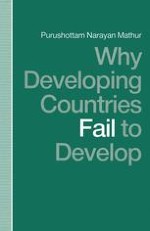1991 | OriginalPaper | Chapter
The Wage Goods Constraint for Employment and Development
Author : Purushottam Narayan Mathur
Published in: Why Developing Countries Fail to Develop
Publisher: Palgrave Macmillan UK
Included in: Professional Book Archive
Activate our intelligent search to find suitable subject content or patents.
Select sections of text to find matching patents with Artificial Intelligence. powered by
Select sections of text to find additional relevant content using AI-assisted search. powered by
That the prices of necessities in poor countries are cheaper than those in the rich countries at the prevailing exchange rates was the conventional wisdom among development economists for at least the past forty years; it was maintained that the comparison of per capita national income between different countries at the prevailing exchange rates might be quite misleading for representing the relative ‘real’ income enjoyed by the people of different countries. Some scholars tried to estimate their own ‘real’ exchange rates for the purpose, so that a better comparison of the purchasing power of different currencies could be obtained and thus a better indication of the relative poverty of developing countries. As a first approximation, a ‘cereal’ exchange rate was widely used; this was based on the premise that the exchange rate that equalised the cost of the basic consumption good like cereals across various countries better represented the purchasing power of the masses than the currency exchange rate. It might therefore be a better indication of the relative welfare of the countries in question.
